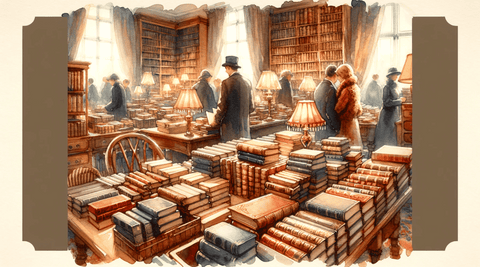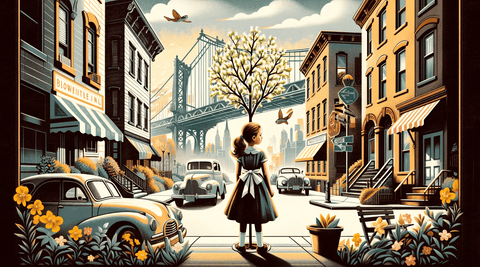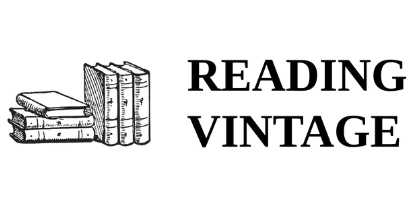January 12, 2024
The best book club books can tell a true story—a heartwarming tale with timeless charm. They connect us with the past through the written word, offering a glimpse into the worlds and ideas that shaped our present.
In this guide, we'll explore the enchanting world of vintage book clubs. Perfect for book lovers who enjoy the company of like-minded readers. Let's dive in and discover the joy of these timeless treasures within our own lives in the context of the best book clubs.

The digital age has breathed new life into book clubs:
Discover the enchanting world of vintage book club books. Join a community of book lovers, delve into timeless classics, and enrich your reading experience. Explore the richness of the past and connect with like-minded individuals.

Book clubs are gatherings of book lovers that promote intellectual growth, friendship, and a shared love for literature. They offer an enriching experience for readers of all ages.
A book club is a group of people who meet regularly to discuss a book they have all agreed to read. It's a place for sharing opinions, learning different perspectives, and engaging in stimulating conversations.
Running a book club can be a great experience. I have created some helpful downloads to make it even better! These downloads will help you organize your book club, have interesting discussions, and add some fun to your meetings. You can print them or use them on your tablet. Enjoy your book club to the fullest!
Book Lover's Game Pack: Instructions & Game Rules for 5 Exciting Literary Games(Digital Download PDF): Take your love for books to a new level with our Ultimate Book Lover's Game Pack! Inspired by our popular article, '5 Fun Games for Book Lovers', this downloadable pack is the perfect companion for any book club meeting, friendly gathering, or a quiet night in.
How to Use: Download and print the game instructions or add them to your tablet. These games can be a delightful icebreaker or a way to spice up your regular book club meetings.
Book Club Printable Planner System to Enjoy Grow Organize Reading Discussion Meeting Agenda Conversation Starters Rules Questionnaire (Digital Download PDF Letter A4 A5): Featuring a variety of tools designed to keep you organized and promote engaging book club discussions, this planner includes a meeting agenda, conversation starters, book club rules, and a questionnaire. It's the ultimate resource to make your book club experience truly enjoyable.
How to Use: Download the planner system, print the needed pages, or use them digitally on your tablet. This planner will help you stay on track with your reading goals and ensure that every meeting is well-structured and engaging.
Book Club Startup Checklist: Simplifies the Process Of Creating a Book Club (Digital Download, Letter Size Printable): Introducing our Book Club Startup Checklist—the perfect companion for book lovers looking to launch their book club! It also improves emotional intelligence and makes people feel like they belong to a group.
How to Use: Download and print or use digitally to guide you through starting a book club. This checklist will simplify the process and provide you with a clear roadmap.
Level up your book club with these helpful templates and tools. You'll enjoy reading more if you stay organized and talk to other people who like to read. Find out about these tools to make your book club more interesting.
A book club is a structured yet flexible community that fosters a shared love of reading and thoughtful discussion.
A book club consists of several key components:
Whether you want to join an existing book club or start your own, the information here will take you on a fun literary journey.
Book clubs unite individuals passionate about reading. Curious about what happens in these gatherings? This section highlights the activities, discussions, and unique experiences that make book clubs a favorite pastime for many.
In book clubs, especially ones that focus on old books, the role of the leader is very important. To enjoy book club talks and group conversations, it is necessary to use tact, understanding, and a little diplomacy.
The group discussion leader must ensure that different ideas can grow, that disagreements are respected, and that everyone's voice is heard. Here is a list of the top 10 carefully chosen phrases that a book club leader can use to ensure that meetings are intellectually stimulating, friendly, and fun.
"Let's hear from someone who hasn't spoken yet. What are your thoughts on this?" - Encourages inclusivity and allows everyone to participate.
"That's an interesting perspective! Can anyone add to that or offer a different view?" - Validate opinions while inviting diverse viewpoints.
"I see we have differing opinions. Let's explore these different thoughts and see what we can learn from each other." - Diffuses potential conflicts by framing disagreements as opportunities for learning.
"We seem to be spending a lot of time on this point. Shall we move on to the next topic?" - Tactfully redirects the conversation when it's time to move on.
"Thank you for sharing that. How does everyone else feel about this aspect of the book?" - Acknowledges contributions and keeps the conversation flowing.
"I love the enthusiasm! Let's make sure we're giving everyone a chance to speak." - Encourages a balanced discussion without dampening the energy.
"It's great to see such passionate responses. Remember to respect each other's opinions as we continue." - Sets a respectful tone, especially during heated discussions.
"How about we take a quick break and return to this topic? Sometimes fresh eyes bring fresh insights." - Offers a graceful way to pause and regroup if the discussion becomes too intense.
"I appreciate everyone's contributions today. Let's summarize what we've discussed before we end." - Provides closure and reinforces the value of the meeting.
"Thank you all for a lively discussion! I'm looking forward to our next meeting and the next book on our list." - Ends the meeting positively and builds anticipation for future gatherings.
These phrases can help a book club leader handle different situations during a meeting and keep the conversation respectful, interesting, and fun for everyone.

Choosing the right books for a book club can be both fun and hard, especially if the group is interested in classic literature. This section will help you choose books that fit the interests of your book club, the order in which you want to read them, and the special qualities that make a book great for discussion.
War and Peace" by Leo Tolstoy (1869): This epic novel explores the lives of five aristocratic families during the Napoleonic Wars. Through love, loss, and war, Tolstoy paints a vivid picture of Russian society, intertwining historical events with fictional characters.
"I, Claudius" by Robert Graves (1934): Written in the form of an autobiography, "I, Claudius," tells the story of Claudius, the stuttering, limping Emperor of Rome, who was considered an idiot by his family. The novel provides a unique perspective on the intrigues and scandals of the Roman Empire.
Robert Graves wrote "I, Claudius" during a time of financial difficulty, and he later admitted that he wrote the novel to make money. Despite this, the book became a literary classic and was adapted into a successful BBC television series in 1976.
Anne Frank, "The Diary of a Young Girl" (1947): The personal reflections of Anne Frank, a Jewish teenager hiding from the Nazis in Amsterdam. Anne's father, Otto Frank, was the only family member to survive the Holocaust and published her diary posthumously.
"In Cold Blood" by Truman Capote (1966): "In Cold Blood" is a pioneering work in the true crime genre. It details the 1959 murders of the Clutter family in Kansas and the subsequent investigation and trial. Capote's meticulous research and narrative style transformed how non-fiction could be written.
Truman Capote spent six years researching and writing the book, becoming close to some of the key figures involved in the case. The book's success helped popularize the "non-fiction novel" genre, but the writing process took a heavy emotional toll on Capote, affecting his subsequent work and personal life.
"Silent Spring" by Rachel Carson (1962): "Silent Spring" is a groundbreaking environmental science book that exposed the detrimental effects of pesticides on the environment, particularly on bird populations. Carson's compelling writing ignited a major controversy and led to changes in the U.S. policy regarding pesticide use. The publication of "Silent Spring" is often credited with launching the modern environmental movement. Despite receiving harsh criticism at the time from chemical companies, the book resulted in a nationwide ban on DDT and other harmful pesticides. It inspired the creation of the U.S. Environmental Protection Agency.
"Leaves of Grass" by Walt Whitman Year Published: 1855: "Leaves of Grass" is a collection of poems by Walt Whitman that celebrates the human body, nature, and the human experience. The free verse poems cover democracy, love, and spirituality. Whitman's exuberant praise of life and universal human values has made this collection a cornerstone of American poetry.
During his lifetime, Walt Whitman revised and expanded "Leaves of Grass," the final version, released in 1892, just before his passing, contained more than 400 poems. The initial edition had only 12. This continuous evolution of the work reflects Whitman's growth as a poet and his ongoing exploration of the themes that fascinated him.
His innovative style and bold themes were groundbreaking and continue to influence modern poetry. "Leaves of Grass" is often considered one of American literature's most important poetry collections. This makes it a must-read for anyone interested in vintage book club books, especially poetry books.

Selecting the right book requires careful consideration of various factors, including:
The first book sets the tone for your book club, so choose wisely.
Survey Members: Ask for references and suggestions.
Consider a Well-Known Classic: Starting with a recognized vintage classic can be a safe bet.
Balance Interest and Accessibility: Pick a book that's engaging but not complex.
Not every book fits the book club mold. Here's what to look for:
Remember, the right selection of books can turn your book club meetings into memorable and intellectually stimulating gatherings.
Celebrity and commercial book clubs have carved out a unique space in the world of book clubs. These clubs, frequently run by well-known people or significant businesses, have popularized reading and influenced literary trends. This section will explore some of the most prominent celebrity and commercial book clubs, uncovering their history, popularity, and intriguing facts.
Oprah Winfrey introduced Oprah's Book Club in 1996 as a segment on her television show. It quickly became a literary phenomenon, turning selected books into bestsellers.
Oprah's selections often lead to increased sales and recognition for authors. The show celebrity book club picks show has evolved, moving from TV discussions to online platforms. As of present-day and the writing of this article, Oprah's Book Club continues to thrive, now in collaboration with Apple.
In 2017, the "Reese's Book Club" book club was set up. It focuses on promoting women writers. The club has a lot of followers on social media, which often means that a best-selling author or certain works get more attention. Most of the book club's business is done on Instagram, where Reese posts monthly recommendations from best-selling authors. Reese's Book Club is still popular and going strong.
Amazon Book Club helps organize and facilitate book club discussions. Users can create and join clubs, manage reading lists, and share notes. Amazon Book Club continues to be a popular tool for book club enthusiasts.
Celebrity and commercial book clubs have played a vital role in shaping reading habits and literary tastes. From Oprah's influential selections to Reese's focus on female authors and Amazon's technological innovation, these clubs offer diverse and engaging reading experiences.
Book clubs, whether run by celebrities or on Amazon, are a great way to meet book lovers and discover new titles.

Running a successful book club is an art beyond merely selecting books. It involves creating an engaging environment, fostering lively discussions, and ensuring members feel connected and valued. In this section, we'll explore the key elements contributing to a thriving book club, offering insights and practical tips to make your book club a rewarding experience for all.
Success in a book club is often defined by member engagement, a thoughtful selection of book club books, and a welcoming atmosphere. Here's what contributes to success:
Book clubs are not just about reading and discussing book club books; they can be a source of creativity, connection, and community. Here's a table with ideas to inspire fun and engaging book club meetings:
| Activity | Description |
|---|---|
| Themed Meetings | Choose themes related to book club books and encourage members to dress up. |
| Book-Related Games | Create games or quizzes based on the book club books being discussed. |
| Guest Speakers | Invite authors or experts related to the book club books for special talks. |
| Creative Discussions | Use props or visual aids to make discussions about book club books lively. |
| Explore a Book's Time Period or Setting | Plan activities or discussions that immerse members in the book's setting. |
| Connect with the Author or Field Experts | Arrange virtual or in-person meetings with authors or experts related to book club books. |
| Get Creative with Art Projects and Interpretations | Encourage members to express their thoughts on book club books through art. |
| Bring Characters to Life with Role-Playing | Organize theatrical performances or role-playing based on characters from book club books. |
| Inspire Social Activism and Community Outreach | Align book club books with social causes and organize community activities. |
| Leveraging Technology to Enhance the Book Club Experience | Use technology to facilitate discussions or virtual meetings. |
| Icebreakers and Team-Building Activities | Start meetings with fun activities to build rapport among members. |
Running the very best book club books ever involves thoughtful planning, engaging activities, and a genuine passion for book club books.
Here's how:
Understand Members' Interests: Tailor the selection of book club books to the members' interests.
Encourage Participation: Create a safe space for everyone to express their thoughts on book club books.
Be Flexible: Adapt to the needs and preferences of the members.
Provide Resources: Share additional information or guides related to book club books to enrich discussions.
The number of chapters to read for a book club depends on various factors, including:
It's rewarding to bring book club book lovers together by running a successful book club. You may start a book club that not only discusses book club books but also forges friendships and family dynamics and encourages a lifetime love of reading by emphasizing diversity, creativity, and careful organization.
Remember, the success of a book club lies in the shared joy of exploring book club books and the connections made along the way.

In this section, we'll guide you through various aspects of joining and purchasing for book clubs, focusing on platforms like Amazon and Kindle, and how to get your book on a book club list.
Doing a book club with different book club books can add variety and cater to diverse interests. Here's how:
While purchasing book club books, you might find opportunities to get them for free on Amazon. Here's how:
Joining a book club on Kindle can enhance your experience with book club books. Here's the process:
Search for Book Clubs: Use the Kindle store to find book clubs that focus on your favorite book club books.
Join Kindle Book Clubs: Select the club and follow the joining instructions.
Participate in Discussions: Engage with fellow members on book club books through Kindle's features.

Yes, Amazon offers various book club suggestions and programs that cater to book club books enthusiasts:
Book clubs have long been a cherished tradition for literature enthusiasts. They provide a space for readers to connect, discuss, and deepen their understanding of book club books.
In this era of digital connection, the value and impact of book clubs might seem uncertain. In this section, we'll explore the relevance of book clubs today, their worth, and how you can maximize your experience with book club books.
Yes, book clubs are very much alive and thriving. Here's why:
Community Connection: Book clubs foster community, allowing members to share insights and opinions on book club books.
Digital Platforms: Online book clubs have emerged, connecting readers globally and focusing on various genres of book club books.
Celebrity Influence: Celebrities hosting book clubs have renewed interest in book club books and discussions.
Educational Institutions: Schools and universities continue to use book clubs to enhance students' engagement with book clubs.
Absolutely! Book clubs offer numerous benefits, making them worth the time and effort:
Intellectual Stimulation: Discussing book club books with others can deepen understanding and stimulate critical thinking.
Social Interaction: Book clubs provide social engagement and friendships centered around a shared love for book club books.
Exposure to Diversity: Book clubs introduce members to various book club books, authors, and perspectives.
Motivation to Read: Regular meetings encourage consistent reading and exploring new book clubs.
To maximize your experience with book club books and discussions, consider these strategies:
Choose the Right Club: Find a club that aligns with your book club books and reading pace interests.
Participate Actively: Engage in discussions, share your thoughts on book club books, and listen to others.
Read Regularly: Commit to reading the selected book club books and come prepared for discussions.
Respect Different Opinions: Embrace diverse perspectives on book club books, fostering a respectful and enriching environment.
Book clubs are a fun way to connect with others and explore new books together. Start or join one to discover exciting reads and have great discussions!
Embrace all the secrets and joy of book club books, and may your literary journey be ever-enriching!

Book clubs for young readers are a great way to have fun and learn together. They help kids think and create and bring people closer. Join a book club and discover the amazing world of books!
Timing plays a crucial role in the success of book clubs for young readers. Here's how to make the most of different schedules:
After-School Clubs: These can be part of extracurricular activities, providing a fun and educational way to unwind after classes.
Weekend Clubs: Ideal for more in-depth exploration and creative projects related to the book club books.
Summer Clubs: A relaxed setting that allows extended reading and activities, perfect for diving into vintage literature.

Vintage literature is not just for adults. Introducing young readers to classic works can be a rewarding experience.
Book clubs for young readers are more than just a fun activity. They can help children learn and grow by exploring books from different times and places. Joining a book club can inspire a love of reading and make kids more thoughtful and understanding. So, encourage the young readers in your life to join a book club and watch them flourish!
Discovering vintage book clubs can be a great experience for young readers. In this section, we recommend a selection of classic books that are perfect for after-school or weekend reading. These books can contain a complex story that offers entertainment and education. Young readers are at a fun age, making book discussions educational. Vintage books are ideal for engaging in discussions and creating memorable experiences for young women and men. Check out our ultimate list of book club suggestions!
"Alice's Adventures in Wonderland" by Lewis Carroll (1865): A young girl named Alice falls into a rabbit hole and discovers a whimsical world filled with peculiar characters and puzzling adventures. Lewis Carroll was a mathematician, and the book contains many hidden mathematical references and logical puzzles.
"The Wind in the Willows" by Kenneth Grahame (1908): This charming tale follows the adventures of anthropomorphic animals like Mole, Ratty, Badger, and, Toad in the English countryside. The character of Toad was based on the author's only child, who loved cars and was quite adventurous.
"Peter Pan" by J.M. Barrie (1911): Peter Pan, the boy who never grows up, takes Wendy and her brothers to the magical world of Neverland, where they encounter pirates, fairies, and more. J.M. Barrie created the character Peter Pan to entertain the sons of his friends, the Llewelyn Davies family.
"Charlotte's Web" by E.B. White (1952): A gentle spider named Charlotte befriends a pig named Wilbur and devises a plan to save him from being slaughtered. E.B. White's farm animals inspired the characters in the book.
"The Lion, the Witch, and the Wardrobe" by C.S. Lewis (1950): Four siblings enter the magical world of Narnia through a wardrobe, embarking on a journey to defeat the evil White Witch. Here is an interesting fact, C.S. Lewis and J.R.R. Tolkien were close friends. They often critiqued each other's work.
"To Kill a Mockingbird" by Harper Lee (1960): Set in the 1930s, this novel explores racial injustice in the South through the eyes of young Scout Finch. Harper Lee's father, a lawyer who represented black clients, served as an inspiration for the character Atticus Finch.
"The Catcher in the Rye" by J.D. Salinger (1951): follows the troubled teenager Holden Caulfield as he navigates adolescence in New York City. Despite his literary success, J.D. Salinger was very private and stopped publishing in 1965.
"Fahrenheit 451" by Ray Bradbury (1953): In a dystopian future where books are banned, a fireman named Guy Montag questions society's values. The title refers to the temperature at which paper supposedly catches fire.
"Lord of the Flies" by William Golding (1954): A group of British boys stranded on a deserted island slowly descend into savagery, despite their attempts to govern themselves. Golding's experiences as a teacher and in World War II influenced his bleak view of humanity.
"Anne Frank: The Diary of a Young Girl" by Anne Frank (1947): The real-life diary of Anne Frank, a Jewish girl hiding from the Nazis in Amsterdam during World War II.
Anne's father, Otto Frank, was the only family member to survive the Holocaust and published her diary posthumously.
These remarkable vintage book club books offer a rich variety of themes, and styles, and are well-written. They provide young and teen readers with a coming-of-age story, and valuable insights into history, society, and human nature.
Book clubs are amazing! This guide covers everything about book clubs, from joining to running them and finding the best vintage books. Enjoy!
Book clubs are more than reading groups; they are communities that bring people together through a shared love for literature. Discussing, making connections, and exploring different stories make book clubs so enjoyable.
If you've ever considered joining a book club, there's no better time to start. The best ones cater to various interests, including a focus on vintage book club books.
Book clubs focusing on vintage books are a great way to connect with history and culture and make new friends. Explore the classics and let the timeless words of vintage books enrich your life.
Comments will be approved before showing up.

